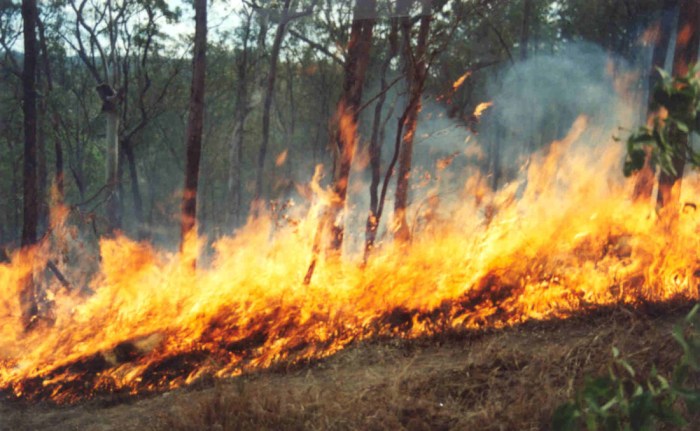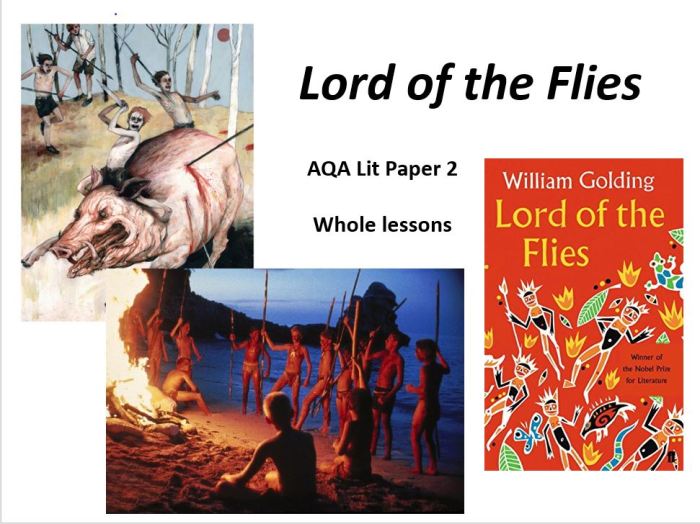Lord of the flies chapter 5 quiz – Embark on an in-depth exploration of Chapter 5 of William Golding’s seminal novel, “Lord of the Flies.” This chapter quiz delves into the intricate character interactions, potent symbolism, and evocative setting that shape the narrative, offering a comprehensive understanding of the novel’s themes and complexities.
As the boys’ fragile society teeters on the brink of chaos, the conflict between Ralph and Jack intensifies, Piggy’s mediating role is tested, and Simon’s enigmatic presence raises questions about the nature of good and evil. The conch, fire, and the island’s environment emerge as powerful symbols, shaping the characters’ actions and underscoring the novel’s central themes.
Character Interactions
In Chapter 5 of Lord of the Flies, the interactions between the boys become increasingly complex and fraught with conflict. The growing rift between Ralph and Jack, the contrasting roles of Piggy and Simon, and the boys’ evolving relationships with one another shape the course of events and foreshadow the darker turns to come.
Ralph and Jack’s Conflict, Lord of the flies chapter 5 quiz
Ralph and Jack represent opposing visions for the island society. Ralph advocates for order, cooperation, and adherence to rules, while Jack embraces a savage and instinctual approach, prioritizing hunting and power. Their conflict escalates when Jack challenges Ralph’s leadership, accusing him of being weak and ineffective.
This clash sets the stage for the island’s division and the eventual breakdown of civilization.
Piggy’s Role
Piggy, the intellectual and rational member of the group, attempts to mediate the conflict between Ralph and Jack. He argues for reason and compromise, trying to bridge the gap between their differing perspectives. However, Piggy’s efforts are often met with hostility and rejection, as the boys’ primal instincts increasingly take hold.
Simon’s Relationship
Simon is an enigmatic and introspective figure who exists on the fringes of the group. He possesses a deep connection to the island’s natural world and a keen understanding of human nature. Unlike the other boys, Simon does not succumb to the savagery that engulfs the island.
Instead, he remains an outsider, observing the unfolding events with a mixture of pity and despair.
Symbolism and Motifs

Chapter 5 of Lord of the Fliesis rich in symbolism and motifs, which enhance the novel’s themes and character development.
The Conch
The conch shell symbolizes order, civilization, and democracy. When Piggy blows the conch to call the boys together, it signifies his desire for structure and rules. However, as the chapter progresses, the conch becomes increasingly fragile and ineffective, reflecting the boys’ descent into savagery.
The Fire
The fire represents both life and destruction. It provides warmth and light, but it also has the potential to consume and destroy. The boys’ struggle to maintain the fire symbolizes their ongoing battle between their civilized and savage instincts.
Darkness and Light
Darkness and light are used symbolically throughout Chapter 5. Darkness represents chaos, fear, and the unknown, while light represents hope, safety, and civilization. The boys’ fear of the “beastie” is most potent in the darkness, and their hope for rescue is symbolized by the light of the fire.
Setting and Atmosphere

Chapter 5 of Lord of the Fliestakes place in the island’s jungle, a dense and overgrown area that symbolizes the untamed and primal nature of the boys’ surroundings. The setting plays a crucial role in shaping the events of the chapter and creating an atmosphere of fear and suspicion.
The jungle’s dense vegetation and lack of visibility create a sense of isolation and vulnerability among the boys. They are surrounded by unknown dangers and cannot see what lies ahead, making them more susceptible to fear and paranoia. The darkness of the jungle also contributes to the atmosphere of fear, as it obscures their surroundings and makes it difficult to distinguish friend from foe.
Role of the Island’s Environment
The island’s environment plays a significant role in shaping the events of Chapter 5. The boys’ lack of adult supervision and the abundance of natural resources create a sense of freedom and independence. However, the island’s untamed nature also poses challenges and dangers, forcing the boys to confront their own fears and instincts.
The island’s environment is a constant reminder of the boys’ vulnerability and the fragility of their civilization. The jungle’s unpredictable weather, dangerous animals, and lack of resources make it clear that the boys cannot rely solely on their own devices to survive.
Atmosphere of Fear and Suspicion
The atmosphere of fear and suspicion that permeates Chapter 5 is palpable. The boys’ fear of the unknown and their distrust of each other create a tense and volatile environment. The rumors of a “beast” lurking in the jungle further heighten their anxiety and make them more likely to see danger everywhere they turn.
The atmosphere of fear and suspicion is also fueled by the boys’ own imaginations. Their fears and suspicions lead them to misinterpret events and see danger where there is none. This atmosphere of paranoia makes it difficult for the boys to trust each other and work together, ultimately contributing to their downfall.
Foreshadowing and Irony: Lord Of The Flies Chapter 5 Quiz
Chapter 5 of Lord of the Fliescontains several instances of foreshadowing and irony that hint at the dark events to come and highlight the boys’ descent into savagery.
Foreshadowing
One example of foreshadowing is the mention of the “beast” that the boys fear. This fear, initially dismissed as childish superstition, foreshadows the real threat that the savage instinct within them poses.
Another instance of foreshadowing is the description of the island as a “miniature world” that mirrors the complexities of adult society. This suggests that the boys’ experiences on the island will reflect the challenges and conflicts of the real world.
Irony
The chapter also employs irony to highlight the boys’ behavior. For instance, the boys’ initial attempts to establish order and civilization are ironic in light of their subsequent descent into chaos and savagery.
Additionally, the boys’ fear of the “beast” is ironic because the true beast is not an external creature but the darkness within themselves.
Significance of the Chapter’s Ending
The chapter’s ending is significant as it marks a turning point in the novel. The boys’ failure to control the forest fire symbolizes their inability to control their own savage instincts.
The fire also foreshadows the destruction and violence that will consume the island in the chapters to come.
Answers to Common Questions
What is the significance of the conflict between Ralph and Jack?
The conflict between Ralph and Jack represents the clash between civilization and savagery, with Ralph embodying order and reason, while Jack embraces primal instincts and violence.
How does Piggy mediate the conflict between Ralph and Jack?
Piggy, despite his physical weakness, attempts to bridge the gap between Ralph and Jack through his intellect and logic, advocating for reason and compromise.
What is the symbolic significance of the conch?
The conch symbolizes order, democracy, and the rule of law. Its presence maintains a semblance of civilization among the boys, but its eventual destruction marks the descent into chaos.